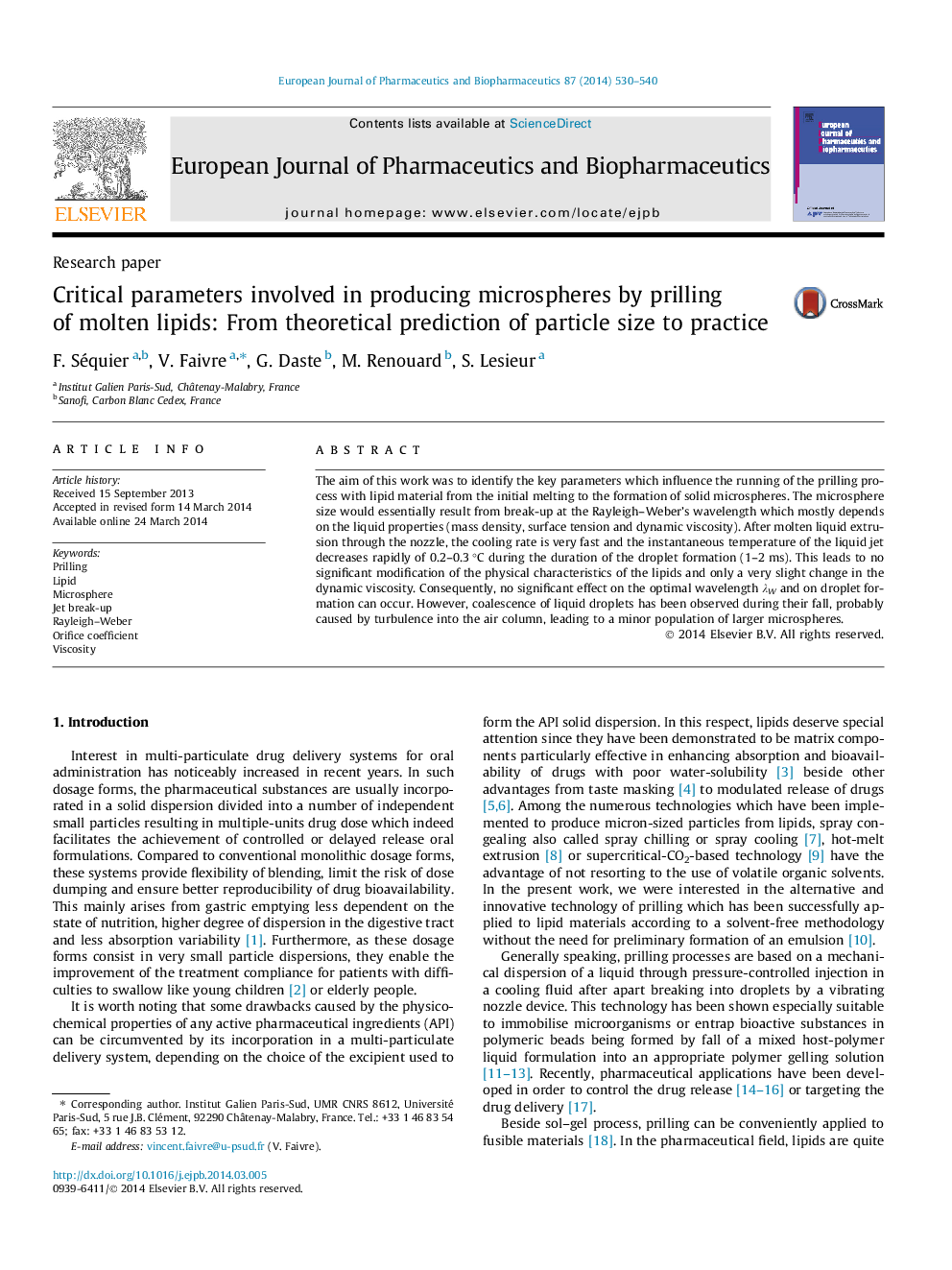| Article ID | Journal | Published Year | Pages | File Type |
|---|---|---|---|---|
| 2083985 | European Journal of Pharmaceutics and Biopharmaceutics | 2014 | 11 Pages |
•The molten lipid jet break-up follows the classical Rayleigh–Weber theory.•Droplet formation time is strongly lower than lipid solidification time.•Due to the solidification time, droplet coalescence is possible during their fall.
The aim of this work was to identify the key parameters which influence the running of the prilling process with lipid material from the initial melting to the formation of solid microspheres. The microsphere size would essentially result from break-up at the Rayleigh–Weber’s wavelength which mostly depends on the liquid properties (mass density, surface tension and dynamic viscosity). After molten liquid extrusion through the nozzle, the cooling rate is very fast and the instantaneous temperature of the liquid jet decreases rapidly of 0.2–0.3 °C during the duration of the droplet formation (1–2 ms). This leads to no significant modification of the physical characteristics of the lipids and only a very slight change in the dynamic viscosity. Consequently, no significant effect on the optimal wavelength λW and on droplet formation can occur. However, coalescence of liquid droplets has been observed during their fall, probably caused by turbulence into the air column, leading to a minor population of larger microspheres.
Graphical abstractFigure optionsDownload full-size imageDownload high-quality image (113 K)Download as PowerPoint slide
